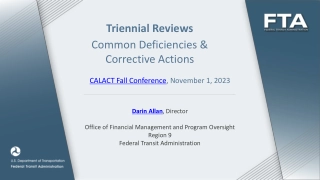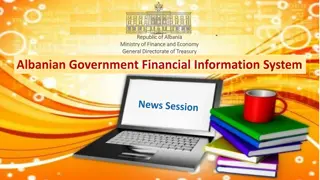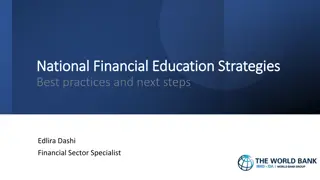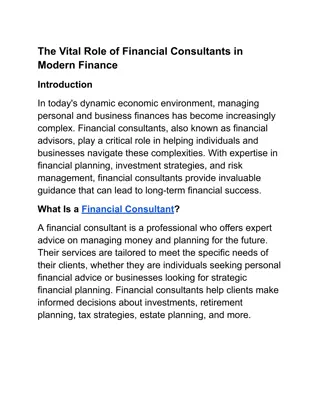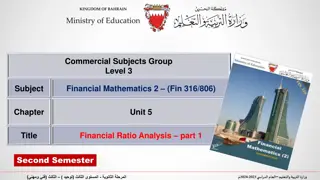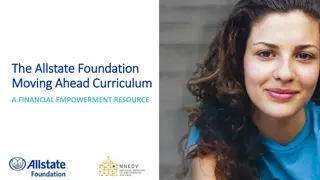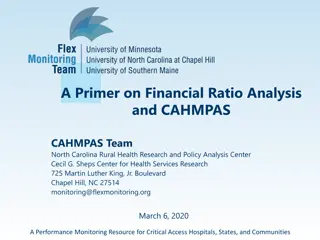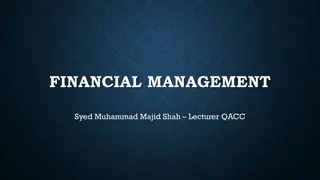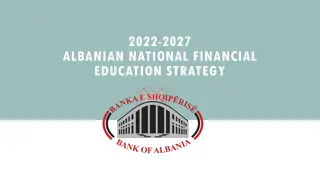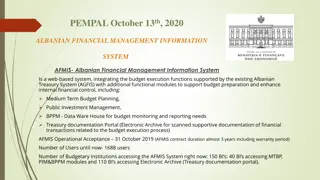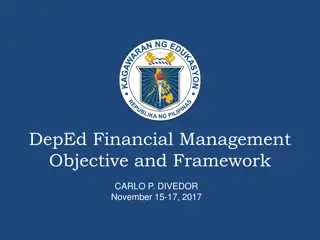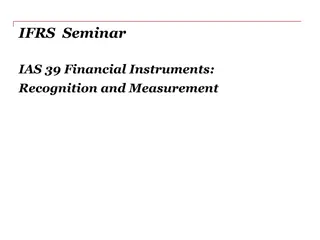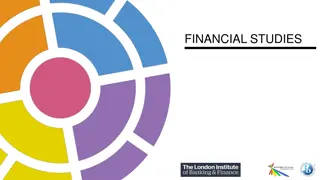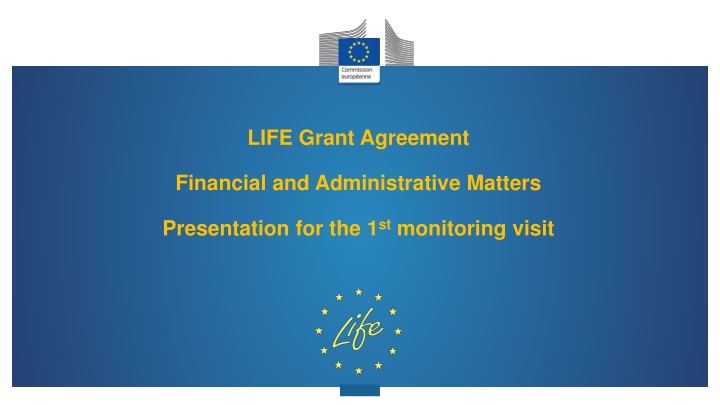
Financial and Administrative Matters in LIFE Grant Agreements
Learn about the financial and administrative aspects of LIFE grant agreements, including support, principles, obligations, reporting, and eligibility of costs. Find out about communication channels, reference documents, and useful guidelines for managing your project effectively.
Download Presentation

Please find below an Image/Link to download the presentation.
The content on the website is provided AS IS for your information and personal use only. It may not be sold, licensed, or shared on other websites without obtaining consent from the author. If you encounter any issues during the download, it is possible that the publisher has removed the file from their server.
You are allowed to download the files provided on this website for personal or commercial use, subject to the condition that they are used lawfully. All files are the property of their respective owners.
The content on the website is provided AS IS for your information and personal use only. It may not be sold, licensed, or shared on other websites without obtaining consent from the author.
E N D
Presentation Transcript
LIFE Grant Agreement Financial and Administrative Matters Presentation for the 1stmonitoring visit
Sections I. Support II. Principles, Obligations and Reporting III. Eligibility of costs Most frequent issues IV. Changes to the Grant Agreement
I. Support Communication NEEMO - Technical & (Financial) monitors First contact on technical/financial issues Monitoring visits => use this as a tool for addressing problems/changes ! The first visit as a useful tool to ensure a correct project management set-up EASME - Project Adviser & Financial Officer They will ensure official communications
I. Support Reference documents of the GA Special Conditions Annex I: General Conditions Annex II: Project Description Annex III: Estimated Budget Annex IV: Mandates Annex V: Model Technical report Annex VI : Model Financial statement Annex VII : Model terms of reference for the certificate on the financial statements Annex X: Financial and Administrative guidelines Annex XI : Guidelines for applicants
I. Support LIFE Website https://ec.europa.eu/easme/en/section/life/life-reporting https://ec.europa.eu/easme/en/section/life/life-contract-financial-aspects HOW TO GUIDELINES: Completing financial statements for Action Grants How to report on your LIFE 2014-2020 projects How to draft progress report on your LIFE 2014-2020 projects Practical guidance on completing the budget shift within the threshold of 20% of the eligible cost flexibility. AVAILABLE TEMPLATES: Consolidated financial statement for the coordinating beneficiaries (.xlsm) and Guidelines Financial statement of the individual beneficiary (also to be used by the affiliated entity Midterm/final report template for traditional, preparatory and technical assistance projects Amendments
II. Principles, Obligations & Reporting Principles Reimbursement of a fixed percentage of eligible costs. All beneficiaries must contribute financially to the project. EASME may reduce the grant if the project is poorly, partially or late implemented. The grant may not produce a profit for the beneficiaries.
II. Principles, Obligations & Reporting Obligations of the beneficiaries Act as single contact point of behalf the consortium Issue payments to associated beneficiaries (within 30 days) Inform EASME on distribution of the funds Monitor the overall implementation of the project Submission of reports in a timely manner Inform the CB for possible changes (legal, financial etc) Ensure reliability of the financial transactions Attention: CB tasks not to be subcontracted. CB/AB/Affiliates not to act as supplier/subcontractor to each other.
II. Principles, Obligations & Reporting Minimum requirements to ensure a good reporting Please check ! Time registration system (consolidated time of the person not only project !) Link invoices/costs to the project (reference in invoices/stamp/project code in accounting system) (Internal/legislative) procurement procedures? EUR 135,000 threshold!! => Open tendering by private beneficiaries! Internal rules for reimbursement of travel costs ? Depreciation rules ? LIFE Logo on communication material & durable goods ! Data to be included in land purchase database (when applicable) ! Are you working with affiliated entities ? Are they in the Grant Agreement ? Are any company owners not receiving a salary (no costs in accounting) involved ?
II. Principles, Obligations & Reporting Reporting - Requests for further pre-financings CB submits the request according to the mid-term report schedule. Language of the request should be in English (incl. financial report!). The request is accompanied by the project implementation report (technical report). Do not forget to fill in the section 8 Comments regarding the financial report (include sufficient detail). 100% of previous pre-financing is used up (in terms of eligible costs!). Full financial report in electronic format (pdf + excel), in English + originally signed payment request & the full consolidated financial statement + pdf signed summary pages of the individual financial statements (all beneficiaries & affiliates) Please ensure the financial statements are intercoherent (i.e. the sum of individual statements = consolidated cost statement) No acceptance of costs at this stage the assessment of costs eligibility is only at the final payment.
II. Principles, Obligations & Reporting Reporting - Requests for payment of balance The CB submits the request at the latest end date of project + 90 days. Full financial report in electronic format (pdf + excel), in English + the original payment request & the full consolidated financial statement + original signed summary page of the individual financial statements (all beneficiaries & affiliates) Please ensure the financial statements are intercoherent (i.e. the sum of individual statements = consolidated cost statement) The request is accompanied by the project implementation report (technical report). Do not forget to fill in the section 8 Comments regarding the financial report . The request is accompanied by the supporting documents requested in the EASME letters. Financial statements must always include actual costs never estimated/budgeted. Budget transfers between cost categories to be included in the consolidated financial statement. Certificate(s) on financial statements, per beneficiary with 750,000 of EU contribution in budget.
II. Principles, Obligations & Reporting Payment arrangements 1st Pre-financing payment - Within 30 days after the signature of the GA (i.e. as of receipt of fully signed GA, including mandates) normally 30% Further pre-financing payments - Within 60 days after the receipt of the Mid-term report - normally 40% or if 2 mid-terms 20% + 20% Payment of balance - Within 90 days after receipt of the final report Attention: The time to pay will be suspended each time there is a request for additional info/supporting documents.
II. Principles, Obligations & Reporting Financial Statements Select the correct strand , i.e. CCM, CCA, GIC, ENV, NAT, GIE, Reporting period financial statement should be equal/within the period of the technical report Select the correct exchange rate option & legal status (as agreed in form A) Total cost to be covered by Union Contribution (% in GA * submitted cost) + co- financing third parties + direct income project + own funding (cost & income to be in balance!) To be filled in by beneficiaries & affiliated entities (in the grant !), the concerned beneficiary should put the totals of each affiliated entity in its financial statement under each cost category. Please fill in all cells unless indicated otherwise or when it concerns totals for affiliates ! Contain also a Certificate for NATURE projects (if relevant) Read the guidance in the templates & guidance documents !!! All cells to be filled in & clear description demonstrating relevance of the cost item for the project
III. ELIGIBILITY OF COSTS MOST FREQUENT ISSUES
III. Eligibility of costs Eligibility criteria (GA Art II.19) Actual - incurred by the beneficiary (registered in own accounts). Foreseen in the estimated budget or accepted by EASME based on relevance for the project. Related and necessary for the implementation of the project. Identifiable & verifiable in accounting records - i.e. usage of project codes. Compliant with applicable tax/social legislation. Reasonable & justified, compliant with principles of: economy, efficiency & effectiveness. Incurred during project period (i.e. between starting and end date of the project, however, as soon as GA is signed, services/goods can be contracted for delivery during project )* *except for: Costs for the preparation of the final report & audit certificate (max TWO months after end-date)
III. Eligibility of costs Personnel costs Personnel costs WHAT? Actual salary costs + social security contributions + other statutory costs. Costs of natural persons under specific work contract (i.e. in-house consultants) WHO? Persons with employment/specific work contract Equivalent appointing act (secondment agreement ).
III. Eligibility of costs Personnel costs Calculation of Personnel costs 3 elements must be known (Based on valid time registration system OR 1720h if no timesheets need to be kept only exceptions defined in Annex X!) Annual productive hours (Gross remuneration taken from the payroll excluding ineligible bonuses* and fringe benefits that are not part of the statutory remuneration) Actual salary cost Working time on the project (Actual time spent on the project => timesheets!!!) *Bonuses which are only applied in EU projects, are performance related, are excessive and not common practice of the beneficiary (see Annex X for more details!)
III. Eligibility of costs Personnel costs Calculation of Personnel costs 3 Methods 1) Hourly rates times actual hours worked or if fixed percentage of work. 2) Gross salary - % allocation (for full time/part-time employment on the project, fixed in the contract/assignment letter) 3) Specific work contracts (if the persons are employed under a specific work contract i.e. consultants)
III. Eligibility of costs Personnel costs 1) Hourly rate times hours worked (calculated per calendar year !) Hourly rate =????? ???????? ?????? ?????? ????? ????? ?????? ?????????? ?????=>Hourly rate * actual working hours on project Example: -Annual gross salary = 50.400 EUR - Annual productive hours = 1680 - Hours worked on the project = 600 50.400/1680 = EUR 30 hourly rate Total personnel costs for the project = 30*600 = 18,000 EUR Attention: The option of the standard 1720 annual productive hours to be used only for staff exempted from filling of timesheets (i.e. working less than 2 days/month on the project, full-time or % allocation defined in the contract Annex X)
III. Eligibility of costs Personnel costs 2) Percentage (%) of the gross salary Employment contract or assignment letter indicates a specific percentage of time to be worked on the LIFE project (as well as % for other tasks). To be used only if assignment of the person concerned is consistent over the entire time of the project. Example: - Employment contract (full time) indicates that 50% of working time is assigned to the project - Annual gross salary = 50,400 EUR Total personnel costs for the project = 50,400 x 0,5 = 25,200 EUR In terms of hourly rate => 50,400 EUR/1720 = 29,30 EUR/hour (in financial statement use 1720 hours) ! Attention: If a person works part-time, i.e. 50% for beneficiary and only working on the project, then 860 hours should be used.
III. Eligibility of costs Personnel costs 3) Specific work contracts This method typically covers the costs of in-house consultants or similar persons that work on the project. Certain eligibility criteria apply: The person works under conditions similar to those of an employee. The result of the work belongs to the beneficiary (unless exceptionally agreed otherwise). The costs are not significantly different from the costs of personnel performing similar tasks. !!! The remuneration is usually based on working days/hours and not on a fixed amount for a specific outcome (in the latter case, costs should fall under the External Assistance category).
III. Eligibility of costs Personnel costs Time Registration Daily records of all hours worked by a given person. Consolidated total working time of each person (not only for the project). Timesheets or registration system should have minimum elements: Clear identification or reference to the LIFE project. Clear identification of the employee, year, month and day. Number of working time units worked for the LIFE project, other EU-funded projects, other tasks. Number of working time units worked in total. Certified/signed by the employee/supervisor (beginning of the next month). Consolidated overview of all time worked by the person Attention: Working time should be registered in a timely and accurate way. Timesheets should not be changed after validation !!!
III. Eligibility of costs Personnel costs Reporting of personnel costs in case of supplementary contracts (i.e. additional contract to an existing one) If a supplementary contract covers the same tasks/work areas as the main contract, then the entire working time and salary cost should be taken into account for the calculation of the hourly rate If different tasks/work are covered (e.g. suppl. contract only covers LIFE), then only the working time and salary cost from the supplementary contract is taken into account. Having a supplementary contract on top of the normal employment contract is acceptable and the cost related to that contract can be considered eligible if: It is in line with the applicable national law and internal regulations; The remuneration is in line with the usual remuneration practices of the beneficiary and paid in a consistent manner whenever the same kind of work/expertise is required; The costs related to the supplementary contract are clearly traceable in the accounting (e.g. separate payslip) and the time spent on the project is properly recorded (in case the working time is not fixed).
III. Eligibility of costs Personnel costs Reporting of personnel costs in incomplete years First year of the project When timesheets are not available for the full year, the beneficiaries should: Use the productive time from the timesheets for the period (available) and increase value with the pro-rata yearly productive time (according to the employment contract) deducting holidays and sick leaves as recorded in the HR records of the organization In case the beneficiary uses the actual costs/hours for the period of involvement in the project - e.g. 6-12/2019). Any annual components (13thsalary, Christmas allowance) must be calculated pro-rata for the period covered. Last year of the project Reporting of figures covering only the incomplete period (e.g. 01-06/2020) The reporting of annual values (personnel costs, productive hours) from the previous complete year Attention: Reporting in incomplete years should not lead to significantly different hourly rates compared to other years!
III. Eligibility of costs Personnel costs Reporting of personnel costs of SME owners Only actual costs incurred can be considered eligible (supported by relevant documentation and registered in the accounting system) No alternative method of calculation will be accepted (profit sharing, dividends, H2020 unit rates). Two general arrangements for accepting the costs of SME owners (provided that applicable national legislation allows such practices): 1. Owners working on the basis of an employment contract project costs are supported by a contract and salary slips and the costs will be reported on the Employees sheet in the Personnel category as usual on the basis of the hourly rate calculation (i.e. actual annual cost / actual annual hours or 1,720 in case it is not possible to determine the actual productive time). 2. Owners working on the basis of other contractual arrangement project costs are supported by a contract on the provision of services (incl. LIFE project reference, duration and hourly rate) and invoices/proofs of payment and the costs will be reported on the NON_Employees sheet in the Personnel category as usual on the basis of hourly rate determined in the contract.
III. Eligibility of costs Personnel costs Supporting documents to be kept and submitted if requested Salary slips (accumulated yearly figures) / invoices. Employment contracts / Work contracts. Extracts of payroll account and social charges. Secondment agreements and/ or assignment letters. Timesheets.
III. Eligibility of costs Personnel costs Common oversights X Beneficiaries don t keep adequate records - i.e. timesheets, contracts, payrolls etc. X Incorrect calculation of personnel costs in case of monthly exchange rate (hourly rate should be calculated in own currency and monthly exchange rate applied !) X Declared hours are not according to timesheets - only actual hours can be accepted. X Unless monthly exchange rate is used or different contracts, one line per person per year should be used. X Incomplete documentation - contracts or timesheets without signatures. X Inclusion of ineligible salary elements - i.e. performance bonuses, dividends, overheads etc. X Wrong calculation or excessive rates (could be related to assigning wrong profiles for tasks to be carried out). X Claims for personnel costs for employees not related to the project. X Wrong use of the standard annual time of 1720 hours. (This option is only for those beneficiaries exempted from keeping timesheets, i.e.: Personnel working for the LIFE project less than 2 full days per month on average within a calendar year. Personnel who work full time or for a fixed percentage of time on the project
III. Eligibility of costs Personnel costs 2% Rule The own contribution of all public entities in the grant agreement should represent at least 102% of the costs for non-additional staff: i.e. permanent staff or staff already under contract before the start of the project/signature of the GA (see definition in GA/Annex X). Only applicable to public entities. Looked at in an aggregated form (so for all public entities in the project). Attention: If you receive additional co-funding from third parties or income from the project that would impact the own contribution of the public entities, always check and respect the 2% rule !!! If 2% rule is not respected, the Union contribution will be decreased at the final payment stage! The beneficiaries should be in contact with the monitoring team in case compliance with the 2% rule is at risk!
III. Eligibility of costs Award of contracts If the project requires the procurement of goods, works or services the beneficiaries shall award the contract to the tender offering: Best value for money (or the lowest price) Absence of conflict of interest. Principles: Beneficiaries to keep supporting documentation (request for offers, offers received, evaluation etc.). Public bodies should follow the public procurement rules. Private entities should follow internal rules (if in line with the above award rules + open tendering procedure when a contract exceeds EUR 135,000. Must publish the call in relevant media not only your website!!! Exceptions should be justified (e.g. monopoly situation) please check in advance!!!
III. Eligibility of costs - Award of contracts Common oversights XSelection procedure of contractors is missing or is not clear. X Publication of the call for tender not in place for amounts higher that EUR 135,000. X Use of framework contracts for which the suppliers were not selected in line with LIFE rules X Contracts for similar services are split in smaller contracts to avoid open tendering. X Excessive amounts compared to the market rates. X Award of contracts between beneficiaries OR conflict of interest (award to affiliates; award to another company of the CEO or owner !). X Inadequate supporting documentation.
III. Eligibility of costs External Assistance Eligibility criteria for external assistance Respect the eligibility conditions of Art II.19 of the GA. Should not exceed the 35% of the total budget (unless justified). Procurement rules are respected. Tasks are mentioned in the technical/financial annex - not the name of the supplier! Project reference and details are necessary on subcontract/invoices . Purchased/leased at normal market rates.
III. Eligibility of costs - Durable goods Eligibility criteria for durable goods Respect the eligibility conditions of Art II.19 of the GA. Durable goods purchased after starting date or during the lifetime of the project. Invoices should bear a reference of the LIFE project. Correct award procedure carried out. Durable goods should bear the LIFE logo. Max. 25% for infrastructure and 50% for equipment per individual cost item Depreciation rate is applied correctly (unless no depreciation is needed e.g. NAT projects when certificate delivered by public/non-profit) in line with internal and national accounting rules.
III. Eligibility of costs - Durable goods Common oversights xWrong depreciation rate and wrong allocation of the time used for the project. x Excessive cost compared to the market prices. x Rules of award procedure are not respected (if required). x Purchase of equipment or parts of it is split to avoid open tendering procedure. x Insufficient supporting documentation. x Equipment purchased before the start or after end date of the project, or close to end date without use for the project. x Equipment is not related to the project or cannot be traced back through related invoices to the project (lack of reference/info in the invoice).
III. Eligibility of costs - Durable goods Prototypes (if applicable) The eligible costs for prototypes are equal to the full purchase costs No depreciation! Certain criteria apply: Equipment or infrastructure specifically created for the implementation of the project. Cannot be available as a serial product. Plays crucial role in the demonstration activities of the project. Never been commercialized and not to be used for commercial purposes during project Otherwise: depreciation and income must be declared.
III. Eligibility of costs Travel and subsistence costs Eligibility criteria for travel costs Respect the eligibility conditions of Art II.19 of the GA. Charged in accordance with beneficiary's usual practices on travel & subsistence. Not for travel between home/workplace. Costs incurred by employees (or equivalent) working on the project (i.e. those charged in the financial Statement under personnel cost). Useful Tips! You can group expenses in one single transaction (e.g. regarding one travel) If not foreseen (especially if outside Europe) prior approval should be requested! Keep supporting documents (tickets, invoices etc.)
III. Eligibility of costs Other Costs & Consumables Eligibility criteria Respect the eligibility conditions of Art II.19 of the GA. Correct award procedure carried out. Communication material should bear the LIFE logo They are directly assigned to the project. Examples: - Small equipment which is not depreciated or registered in the inventory (Consumables) - Certificate on the financial statements (Other Costs), - Dissemination costs (Other Costs), - Travel costs of persons not charged to the project under personnel cost (Other Costs) Attention: General office supplies do not fall within this cost category. They are covered by Indirect costs.
III. Eligibility of costs Indirect Costs General rules Flat rate compensation of max. 7% of the total eligible costs of the beneficiary concerned. Keeping supporting documents for indirect costs is not mandatory. - Utility bills for operating equipment (unless otherwise agreed in the GA) - Administrative and secretarial personnel (unless otherwise agreed in the GA) - General stationery and office supplies Examples:
III. Eligibility of costs Affiliates General reporting requirements Affiliated entities must be explicitly approved and indicated in the GA or Amendment Affiliates must submit the following documentation with each report linked to payment: An individual financial statement for each affiliate - to be signed by the legal representative of the affiliate; A consolidated individual financial statement for the beneficiary (using the standard reporting template) identifying its own costs line per line as well as grouping in one line per cost category the costs per affiliate - to be signed by the legal representative of the beneficiary.
III. Eligibility of costs Ineligible costs Ineligible costs - Examples (non-exhaustive list) X Deductible VAT (Very common mistake! Check always the national legislation a VAT certification might be requested by EASME). X Return on capital & dividends paid by a beneficiary. X Excessive or reckless expenditure. X Exchange rate losses. X Double funding. X Internal invoices (between departments) - unless specifically agreed without VAT, overheads, profit X Costs related to the proposal preparation or the revision phase. All the costs that do not fulfil the eligibility criteria are ineligible!
IV. CHANGES TO THE GRANT AGREEMENT
IV. Changes to the GA General rules for amendment requests Must be made in writing. Submitted and signed by the legal representative or person designated in GA The purpose and changes shall not call into question the award of the grant. Sent at least one month before the end of the implementation (if many changes, send it earlier!). Useful tips! Group/prioritize the requests unless the change is urgent (changes in consortium e.g.). Be proactive and communicate forthcoming changes. Include supporting documentation. More info on amendments @ LIFE webpage: https://ec.europa.eu/easme/en/section/life/life-reporting
IV. Changes to the GA Examples when an amendment is required: Significant changes to Annex II Technical or Financial part. Changes of project s partnership structure. Changes of the legal status of the CB or AB. Extension of the project duration. Changes of bank account. Budget shifts - if shifting between categories is more than 20% of the total eligible costs Attention: Any non-substantial change that is not modifying nor affecting the overall project implementation could be accepted by EASME by email. i.e. change in reporting deadlines, etc.
IV. Changes to the GA Common oversights XLate submission of the amendment request (unless justified). X Unsigned amendment requests or not signed by legal representative or person designated in GA. X Insufficient supporting documentation. X Requests for changes that call into question the grant award decision of the project.


